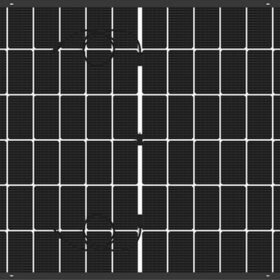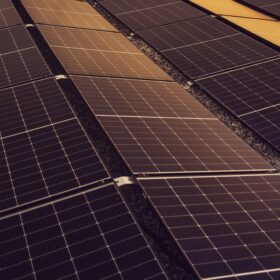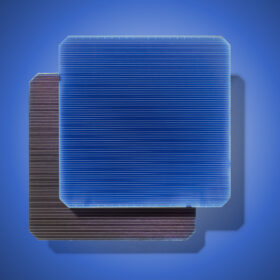How to increase coefficient of performance in two-stage cascade heat pumps
A group of researchers in Thailand outlined a new methodology to identify the optimal temperature in two-stage cascade heat pumps using non-azeotropic refrigerants. Through their analysis, the scientists found that the coefficient of performance for simultaneous heating and cooling is affected by the pinch point temperature at the cascade heat exchanger, with lower temperature levels being responsible for a higher COP.
Sharp launches 450 W bifacial TOPCon module with 22.52% efficiency
Sharp’s new IEC61215- and IEC61730-certified solar panels have an operating temperature coefficient of -0.29% per C and a bifaciality factor of over 80%.
Thermoelectric subcooling may improve coefficient of performance of propane heat pumps by 12%
An international research team has investigated how thermoelectric subcooling may be integrated into propane heat pumps to reduce power consumption in the vapor compression system. Their work showed this combination can not only reduce electricity consumption but also significantly improve heat pump performance.
Ultrathin CIGS cell based on tungsten disulfide promises 25.7% efficiency
The novel solar cell uses tungsten sulfide as the back surface field layer. According to its creators, this layer can be included in conventional CIGS solar cells to improve their efficiency and reduce the absorber material’s cost.
End of net metering not a threat to residential solar profitability
The Netherlands is preparing to end its net-metering scheme, prompting two Dutch research institutes to study the potential impact on PV system profitability. They found that increasing self-consumption rates from 30% to 60% would keep profitability levels stable.
New defrosting tech may increase coefficient of performance of air-source heat pumps by up to 11.2%
Researchers in the United Kingdom have presented a new heat pump system that may avoid reducing heat supply during defrosting operations. The proposed concept can reportedly execute defrosting operations while ensuring continuous heating by condensing the refrigerant in the frosted evaporator.
Hygroscopic hydrogel may increase solar module yield by 2.1%
Researchers in China have found that a special type of hygroscopic hydrogel made of the polyacrylamide polymer and lithium chloride may reduce PV module temperature by up to 7.5%. They have also developed a mathematical model to analyze the operational mechanisms and factors responsible for the cooling performance.
Taiwan installs 2.7 GW of new solar in 2023
Taiwan’s Ministry of Economic Affairs (MoEA) says the island added 2.7 GW of new solar capacity last year, bringing its total capacity to 12.41 GW by December 2023. Feed-in tariffs for installations up to 100 kW continue to drive the market.
Lebanon launches tender for 8 MW solar plant
Lebanon’s Minister of Energy and Water has opened a tender for an 8 MW solar plant that will be publicly funded and connected to the medium-voltage grid to supply power to Electricité du Liban.
POLO back junction solar cell built with PECVD achieves 24.2% efficiency
A group including scientists from Insititute for Solar Energy Research Hamelin (ISFH) and German PV equipment manufacturer Centrotherm has developed a POLO back junction solar cell by using an industrial plasma enhanced chemical vapor deposition (PECVD) system with a low-frequency plasma source. The device achieved a slightly higher efficiency than a reference device fabricated via more expensive atomic layer deposition (ALD).











